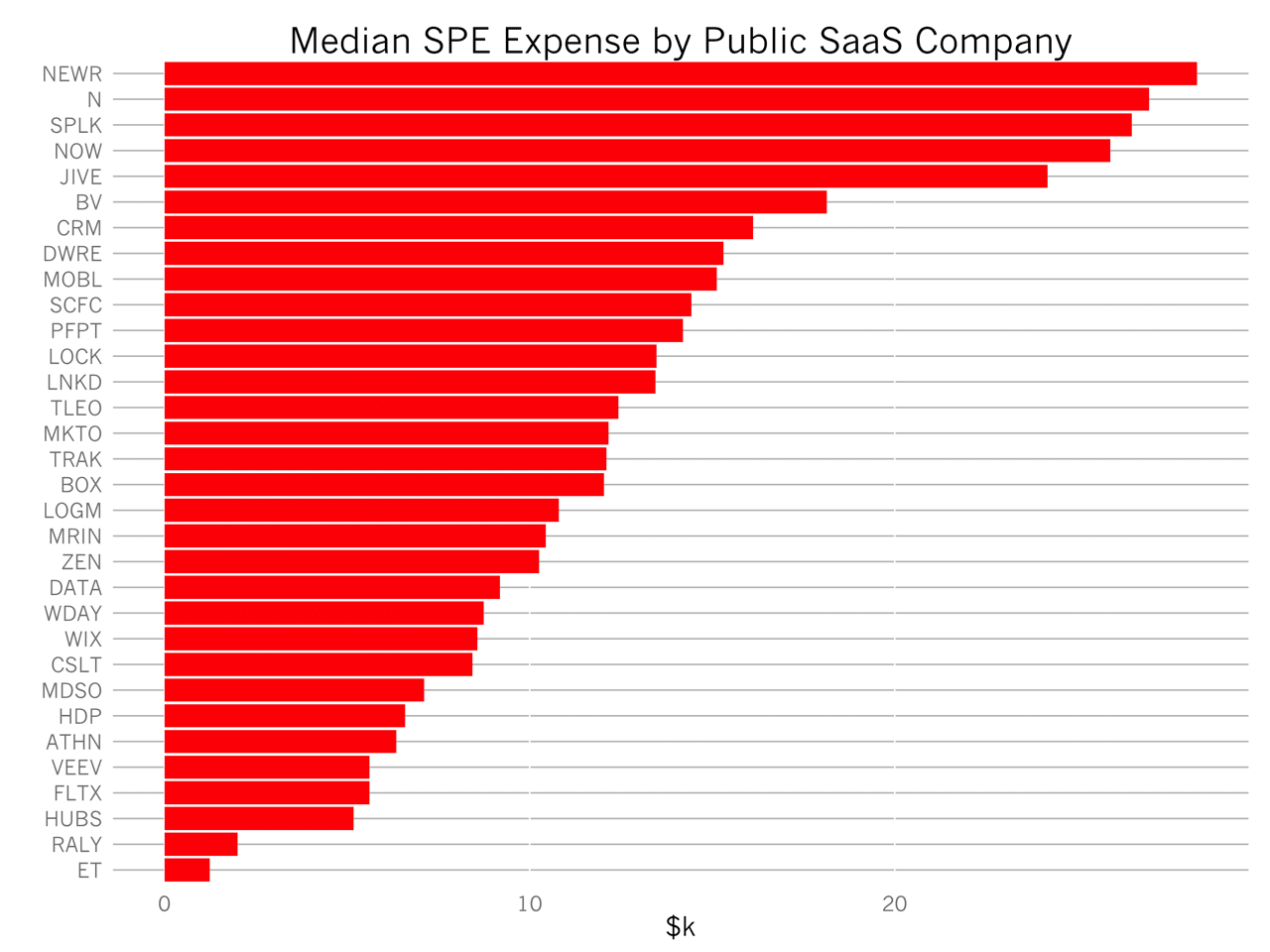How much should your startup budget for its employee stock option pool? One way of answering this question is a blanket addition per year, say a 2% renewal. Another way is to look at the cash based cost of the stock based compensation. We’re going to examine the second one today by looking at the basket of 50+ SaaS companies.
The chart above shows the average stock-based compensation (SBC) per employee by years since founding across the basket of publicly traded SaaS companies. Each blue dot is a data point and the red line is a polynomial regression (loess) to show the trend. In summary, each year the typical public SaaS company spends about $10-20k in stock based compensation per employee.
The number is higher when a company is younger and there is a more risk, and employees must be compensated with commensurately more equity. The figure dips when the startup begins to gain momentum, but is before IPO, a period when the appreciation of a grant is more certain. At IPO, typically in year 7, the compensation rises again because option value increases will likely be more muted than before IPO, since the company’s shares are marked to market every day.
The SBC investment pattern varies substantially by company. Above, I’ve plotted the median spend on stock-based compensation over the first ten years of each company’s life. NewRelic tops the list at over $25k and ExactTarget is the smallest at below $5k.
Many factors skew the investments. Geography (in certain geographies employee value cash over stock), competitiveness of the talent market (more competitive markets create greater stock based incentives), the number of executive hires in a year (executive grants can be quite large, e.g., 8% for a new CEO), and other factors can substantially impact the average spend on SBC.
It’s also important to note that the distribution of stock grants is governed by a power law. The founders and executives often hold a substantial fraction of common stock. Because of the skew in the distribution, the average SBC (stock based compensation) figure I’ve depicted above doesn’t necessarily represent the amount given to an average employee.
Additionally, the value of the SBC isn’t necessarily an accurate representation of the value of the grant, because in all these cases, options and stock granted in the early years appreciated meaningfully. I’ve plotted the growth in share price by round for nine public companies in this post. In some cases, share prices increased by more than 50x in just a few years.
The SBC value reported in a companies financial statements are the 409a valuation data. 409as are independent valuations of company stock that startups perform every 6-12 months, depending on the stage of the company. If you’re curious to probe the depths of stock based compensation accounting, PwC has a great SBC guide here.
Managing your startup’s cap table is an important skill. This discipline is increasingly important in competitive job markets for attracting and retaining talent.

